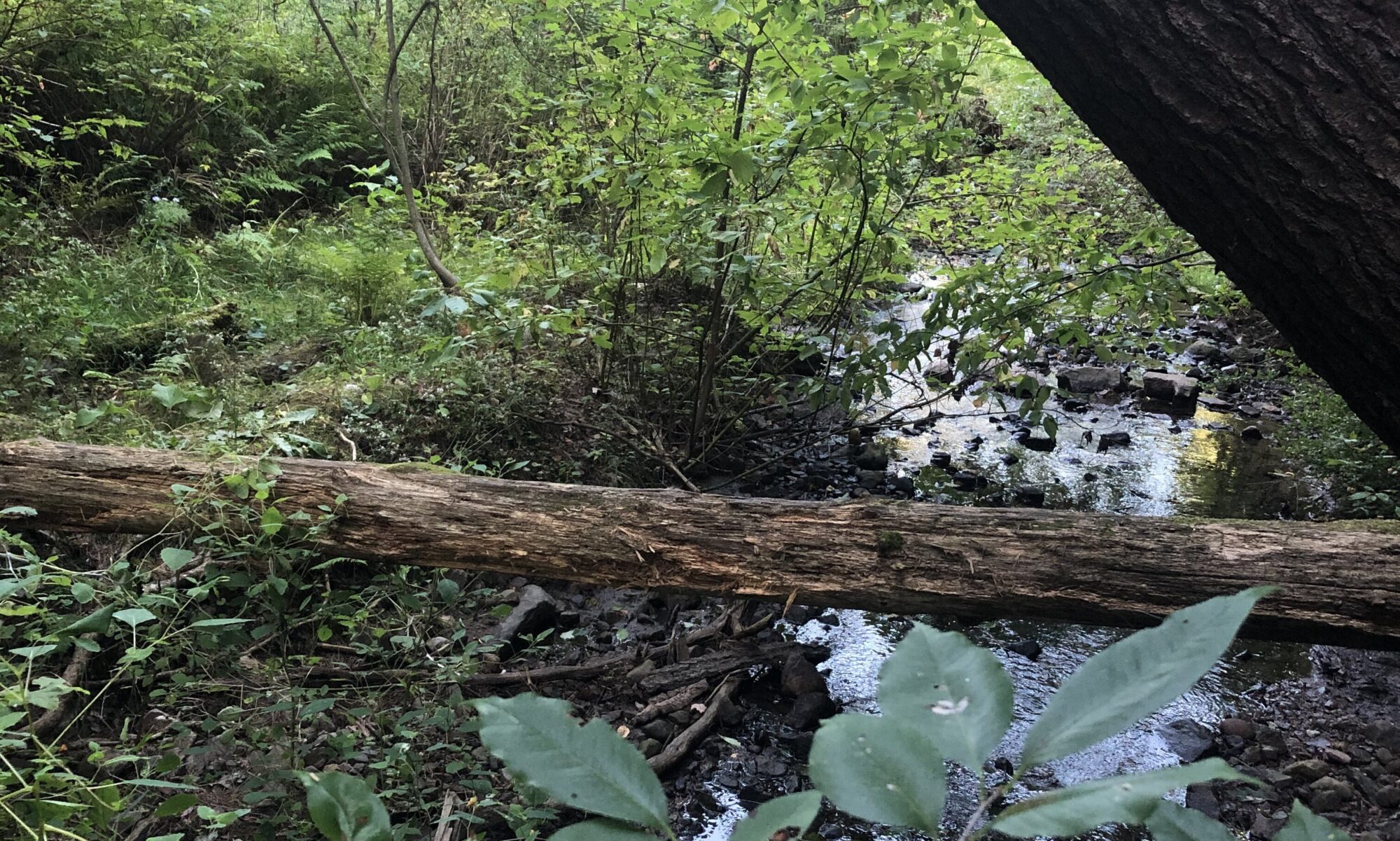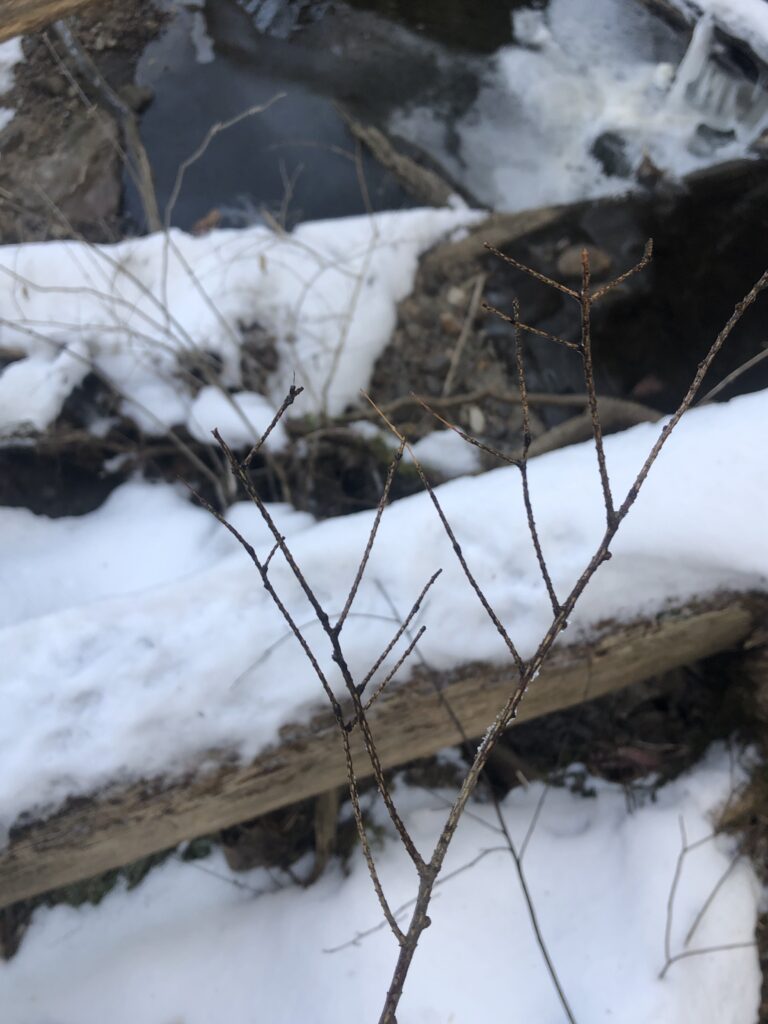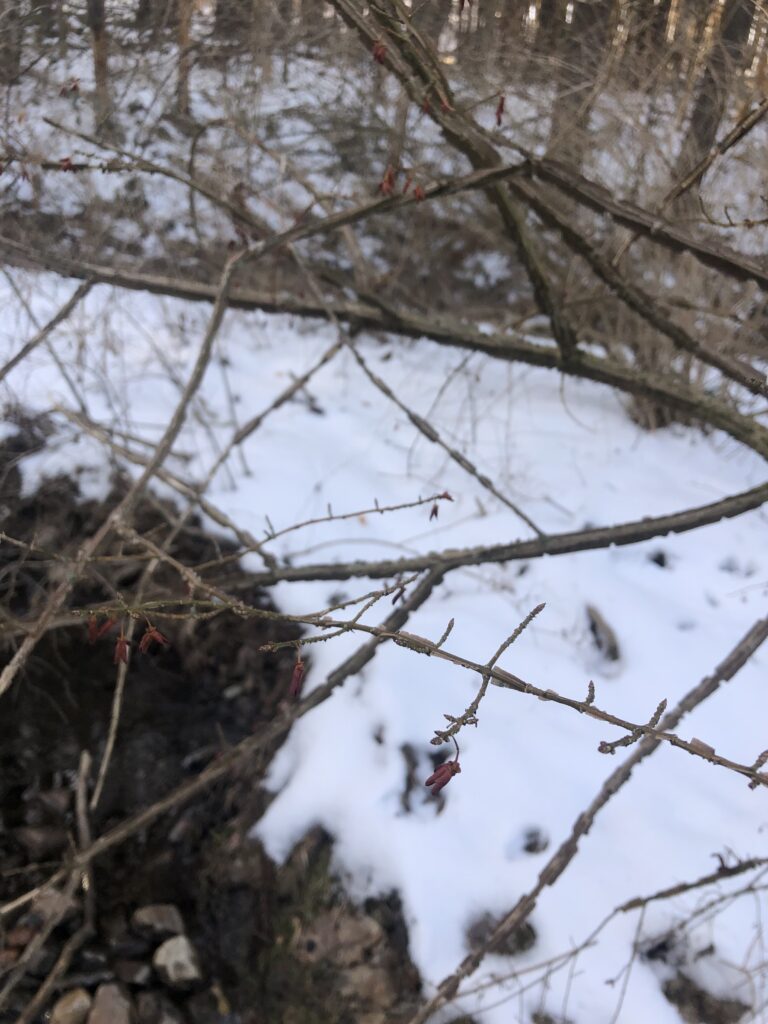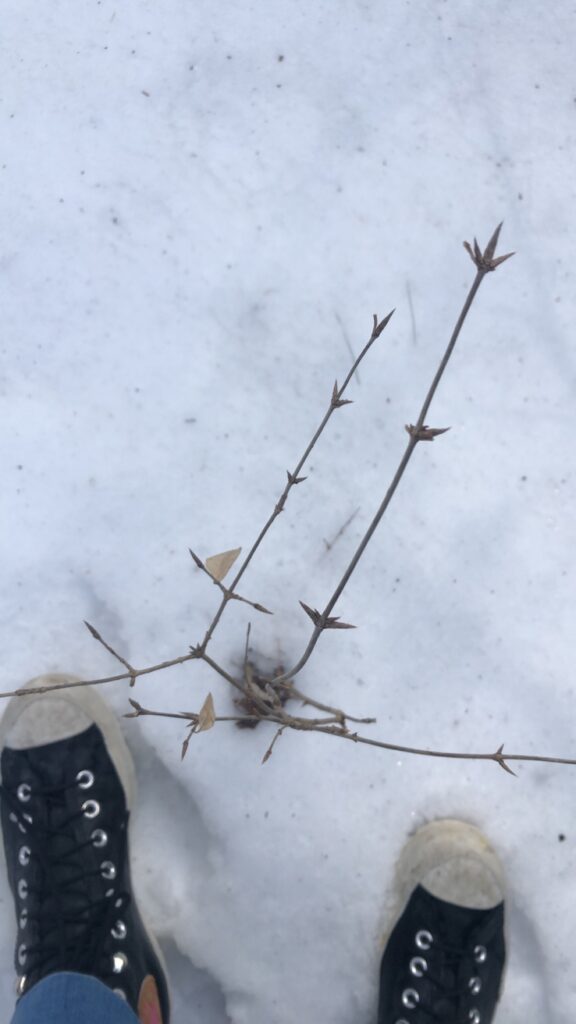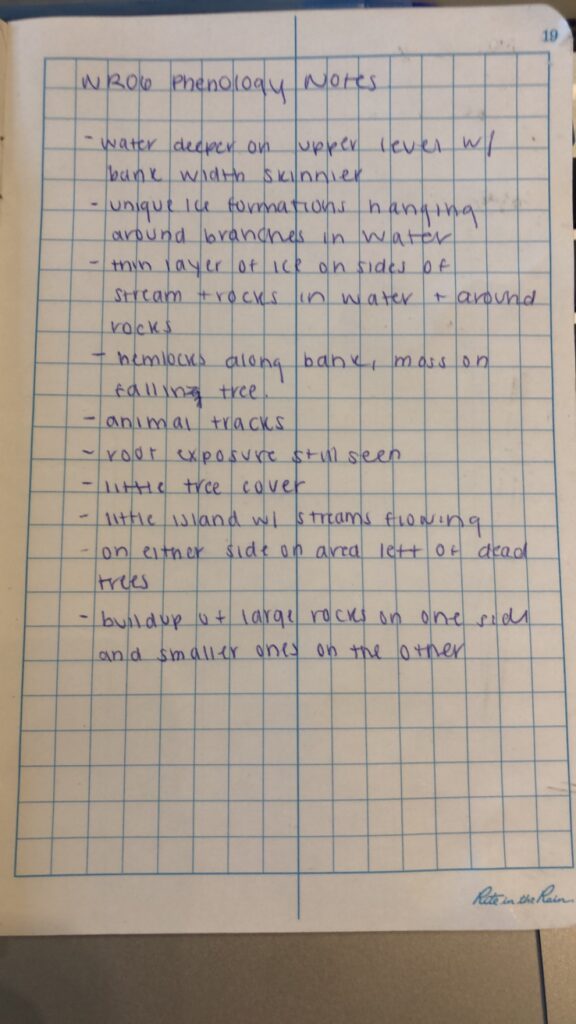Wildlife Activity
Although we didn’t see any animal activity first-hand we did find tracks that indicated that there were still active animals in the area. With the help of our tracking guide, we were able to make predictions as to what kind of species left the prints. More tracking information follows:
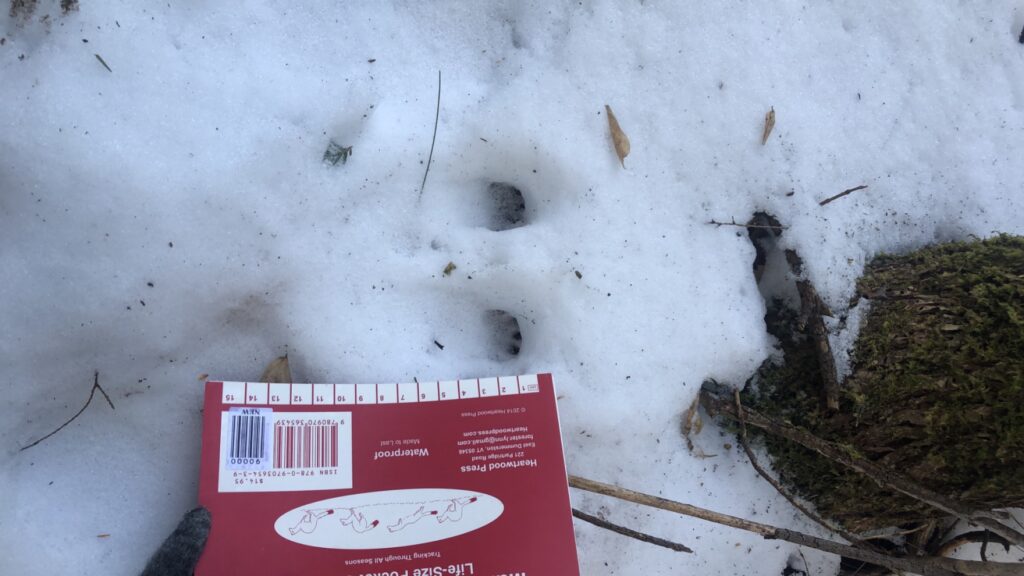
We were less certain about this print but thought it was maybe a hare or cottontail rabbit 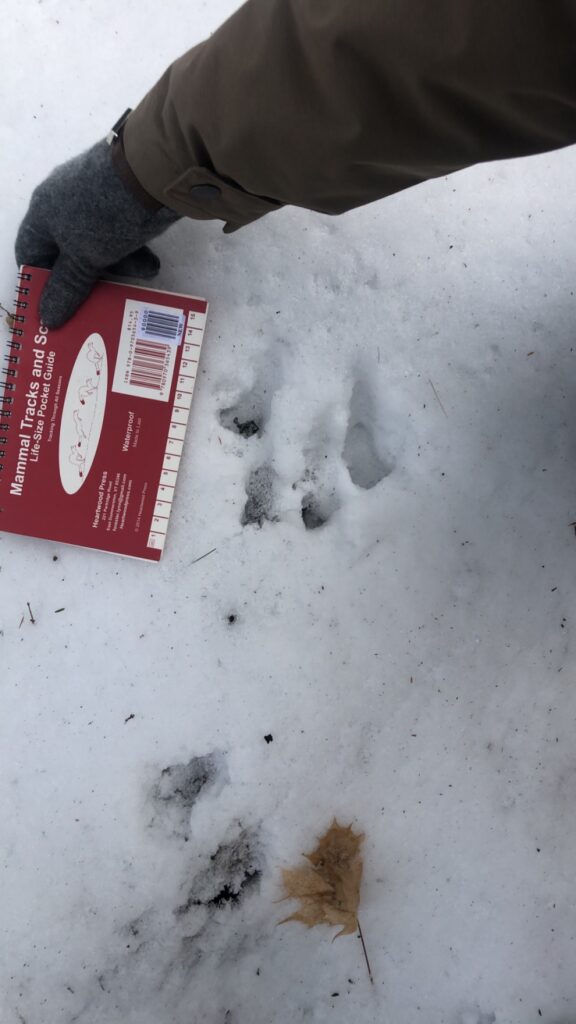
Posssibly a fox: four toes with a “x” across the paw print. 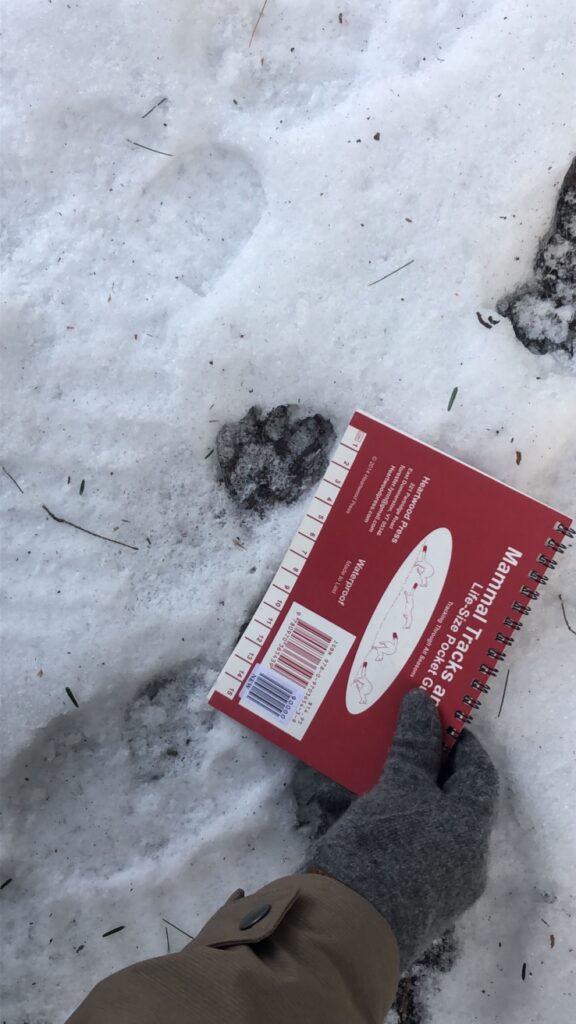
Looks like a dog print. 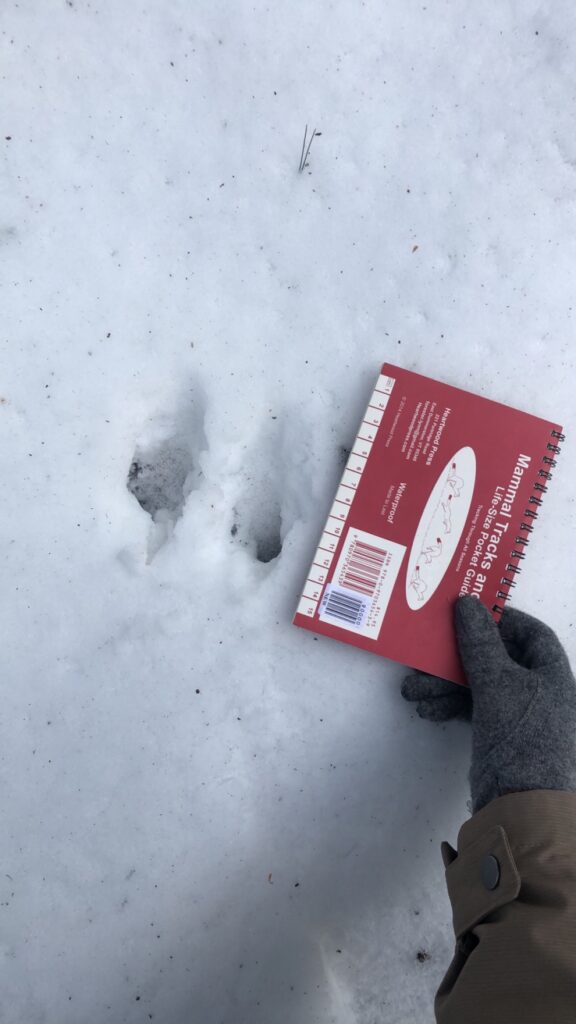
Questionable as to if these are prints or not; no similar ones around and not much detail. If there are prints the animal that left them was proabably a hopper. 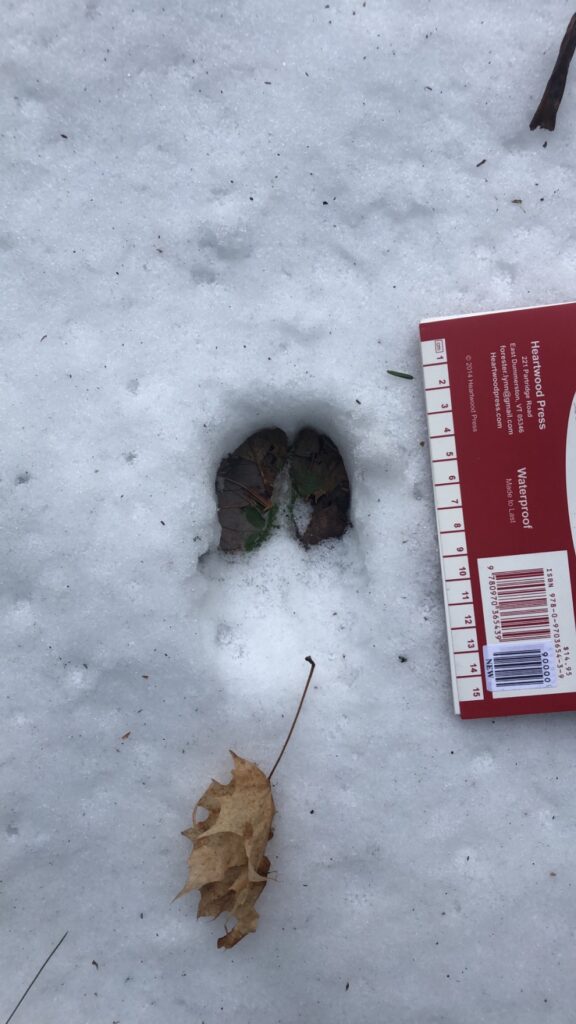
Deer Print: hoove shaped, appropriate size, trail leading down to the water
Winter Twig Identification
For twig identification, we thought that they were either Norway Maple or Red Maple twigs. We came to this conclusion based on the large terminal bud on the twig; Norway Maples have larger terminal buds than Red Maples but both are similarly shaped. The buds were also red which aligns with Normary and Red Maple descriptions.
Sketched Twig Labeled
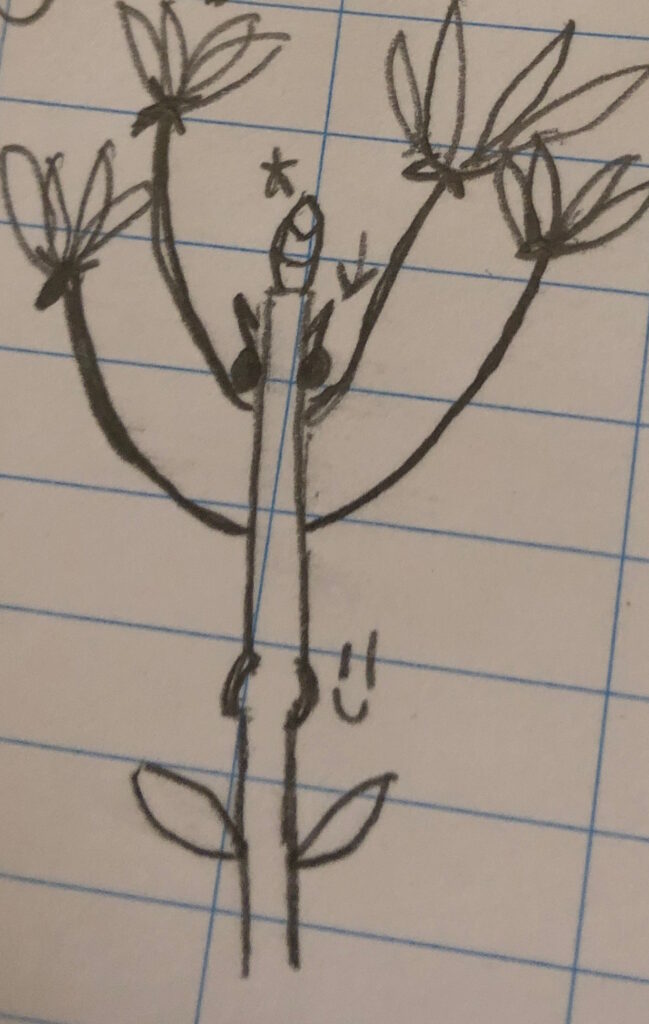
Arrow: bud scar
Smile: lateral bud
Star: terminal bud
Phenological Changes
Some of the most evident changes in the site were observed within the stream. In particular, the width of the stream seemed to be much thinner than our last visit and as a result, some areas of the stream appeared deeper. Along the edges of the water there was some ice but it wasn’t thick enough to support our standing on it and there was still some running water beneath it. Where there were large rocks surfaced throughout the stream there was also ice surrounding them. In terms of vegetation, the area is quite barren with just a couple hemlocks scattered around the banks. In addition, the main fallen tree still had moss on it despite being snow-covered. The running water and the presence of rocks and twigs within the stream created really interesting and intricate icicles.
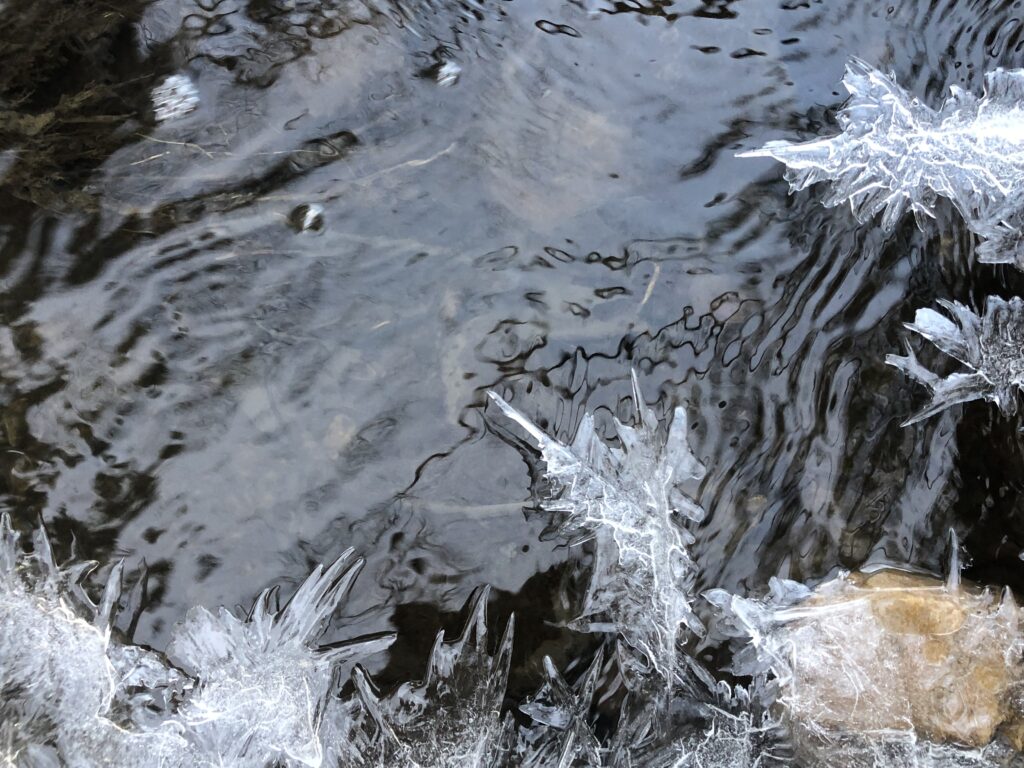
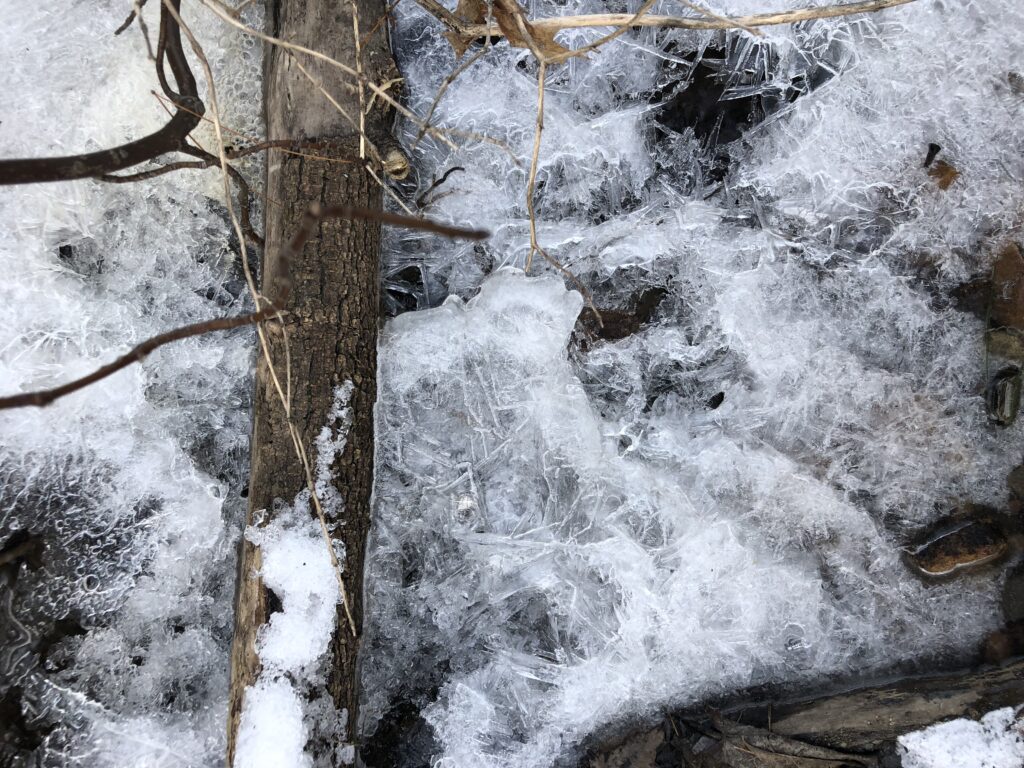
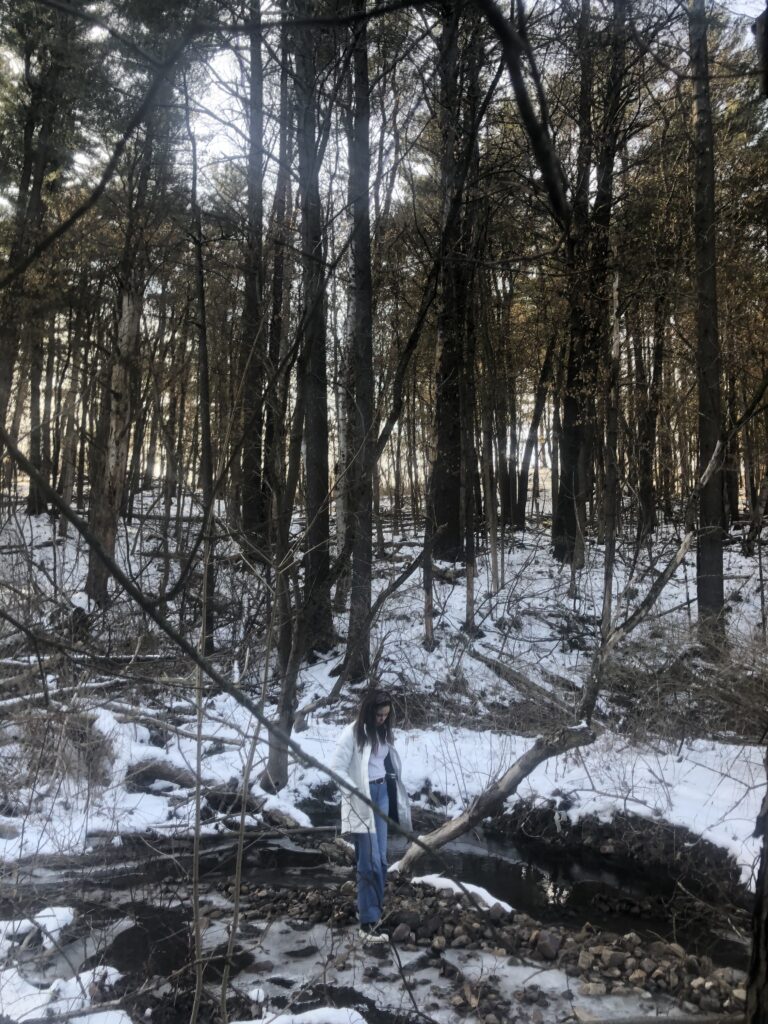
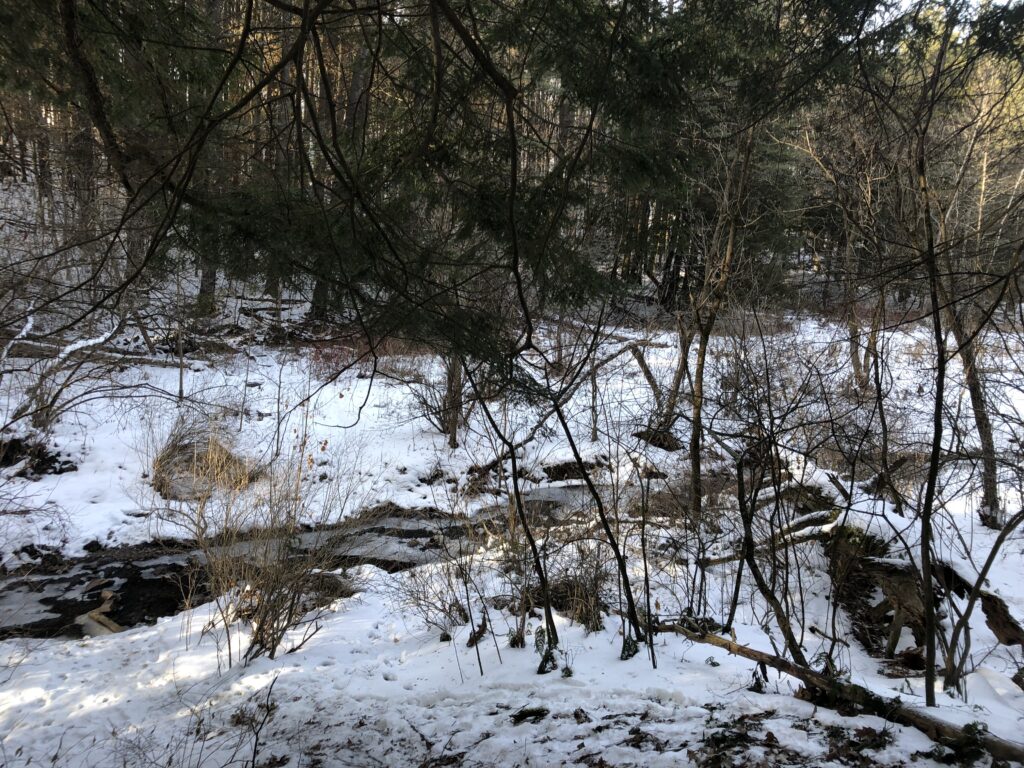
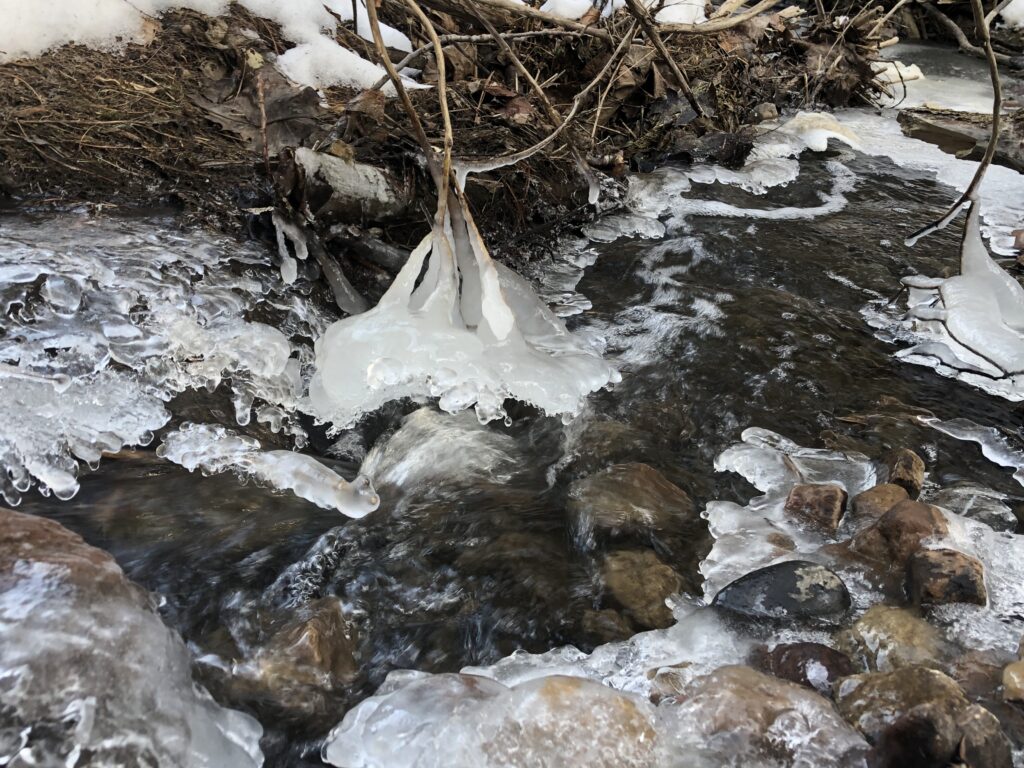
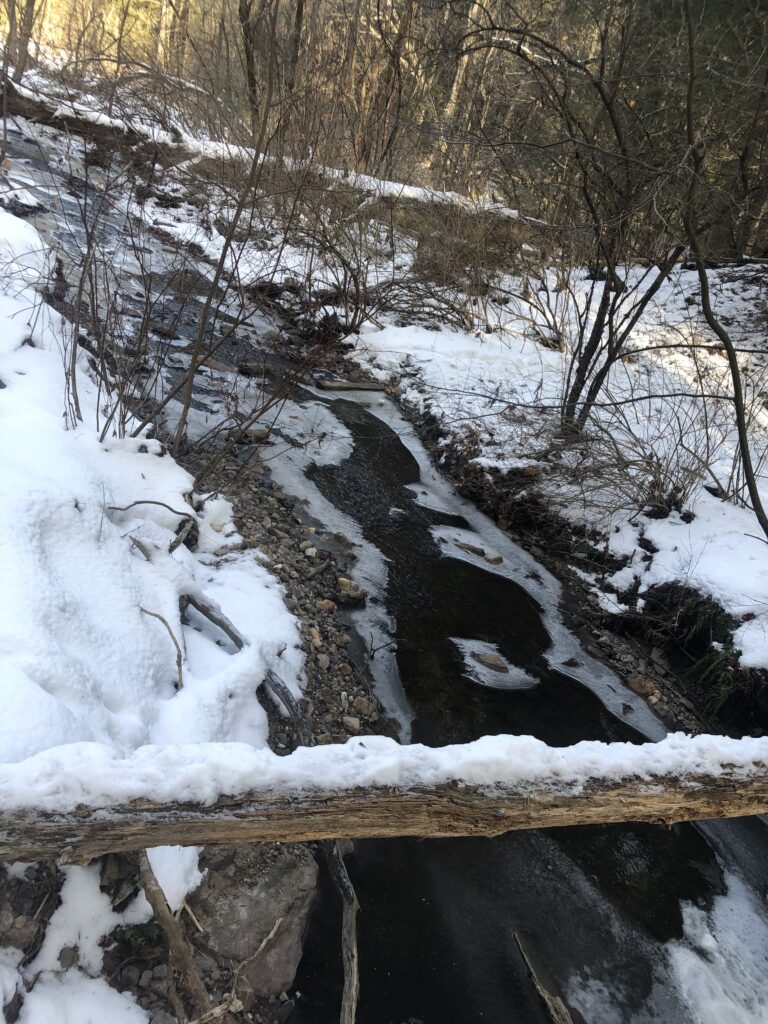
Notice the thin width of the bank 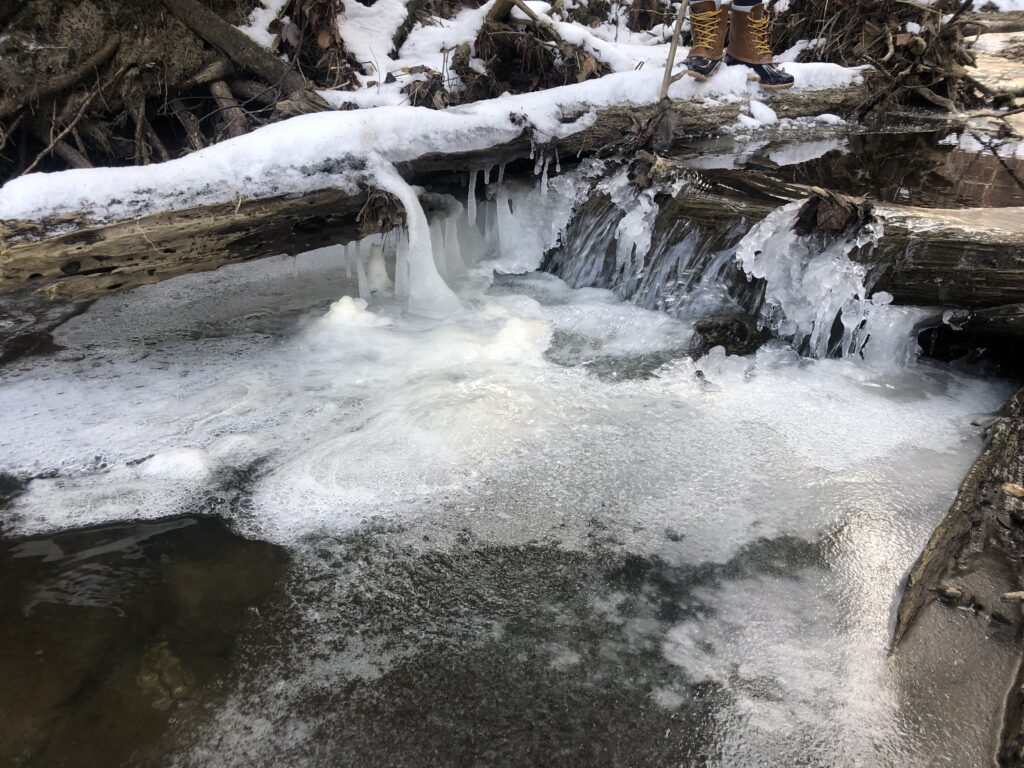
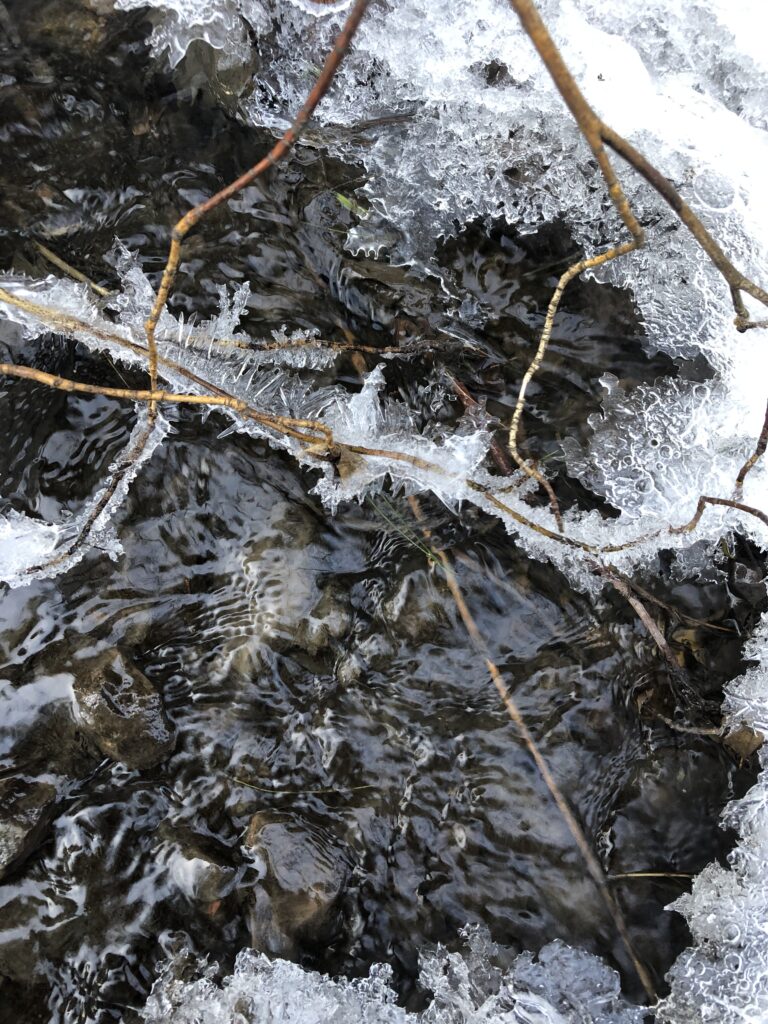
Ice formation on twigs 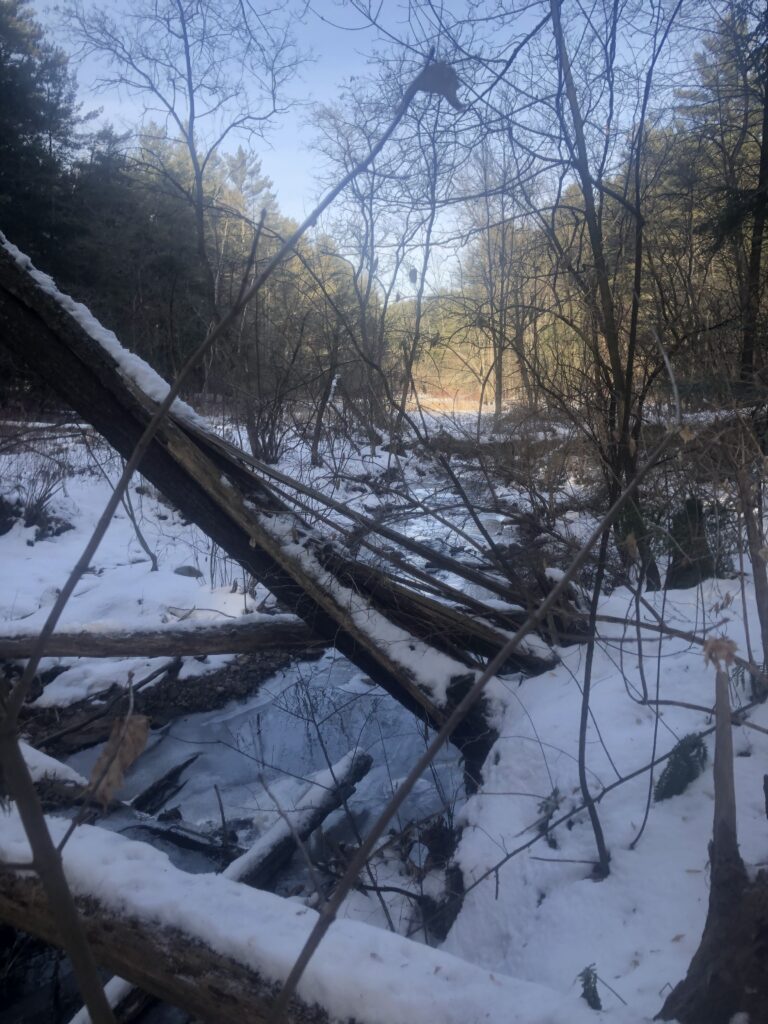
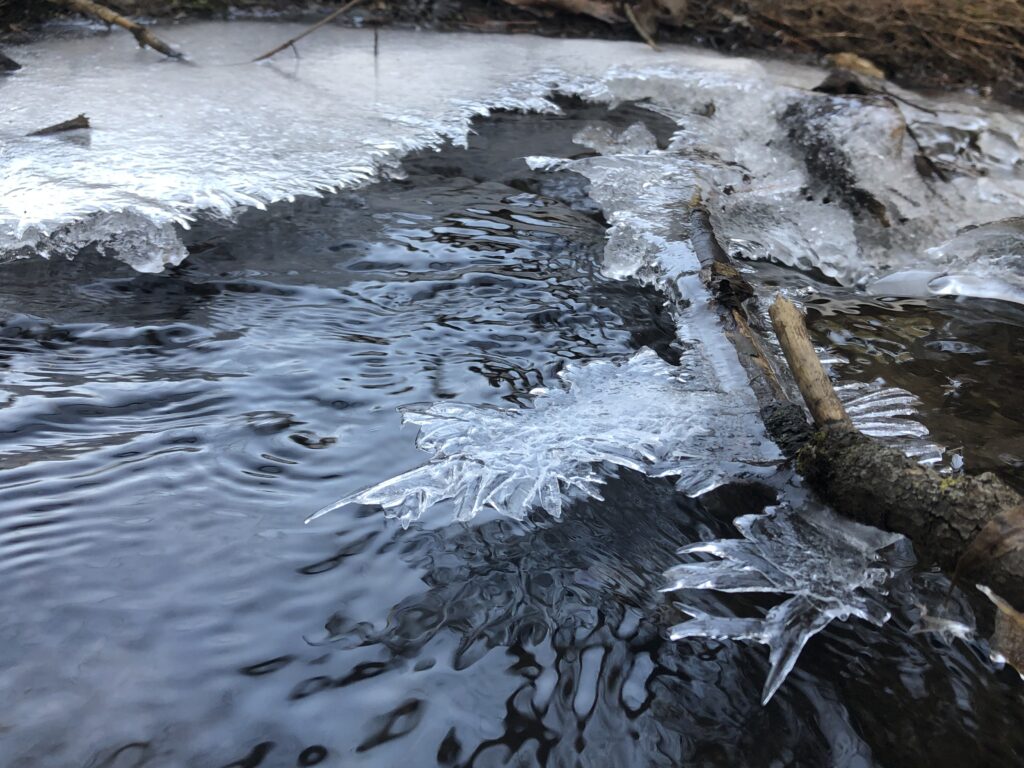
Surface Ice 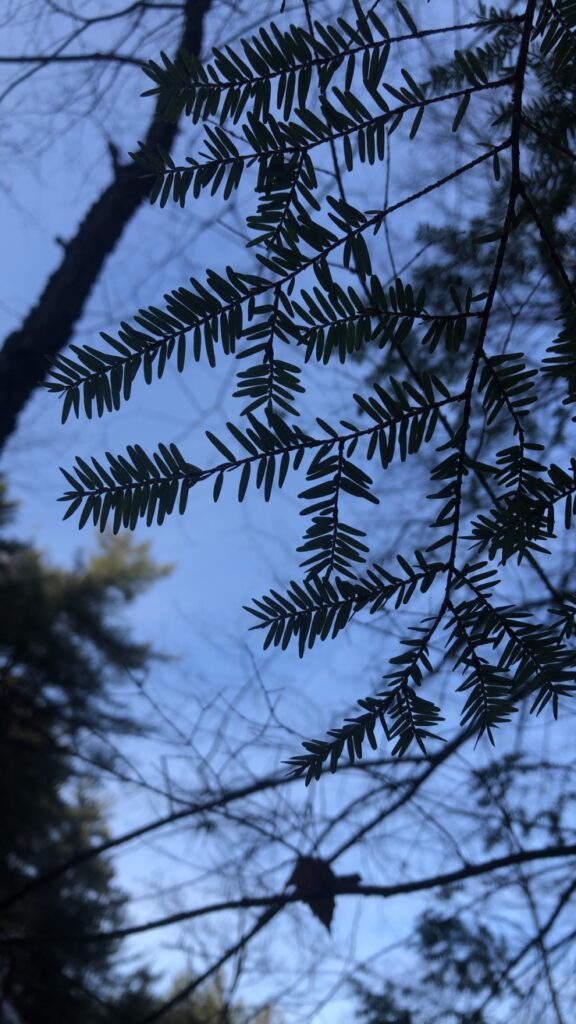
Hemlock
Field Notes
Citations
All photos were taken by me and Sofia Vallecillo
Tracking Information: “Mammal Tracks and Scat: Life-Size Pocket Guide”
